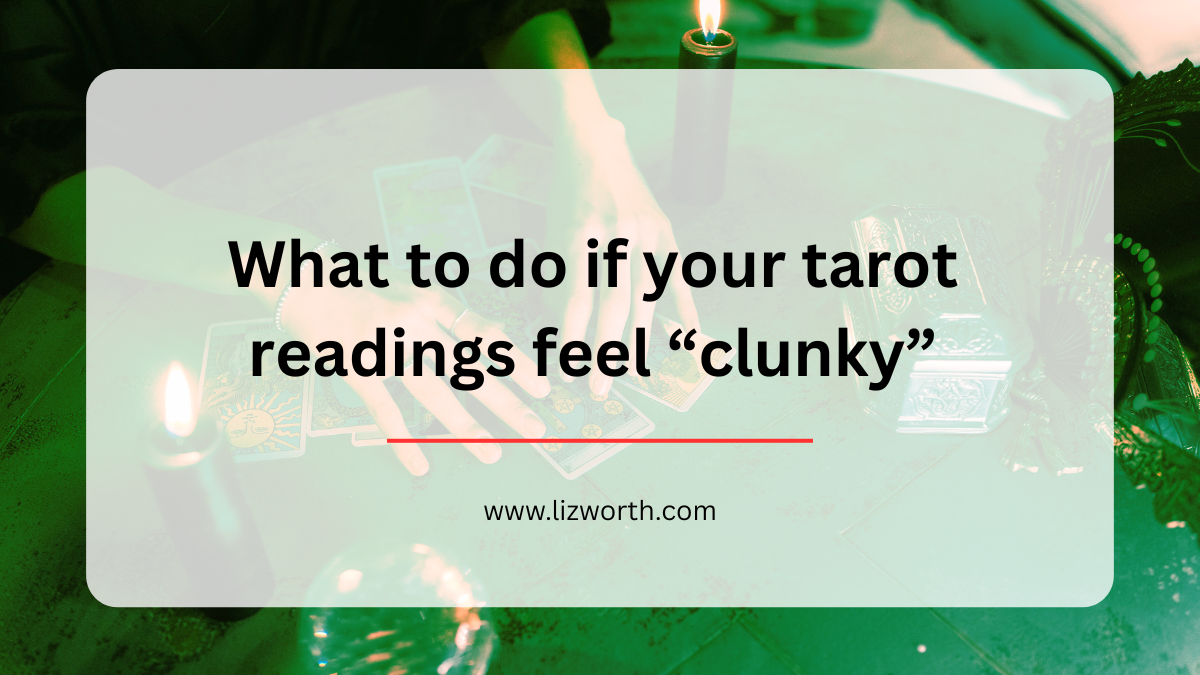What to do if your tarot readings feel “clunky”

A common learning curve that tarot readers share is figuring out how to synthesize the information in their readings. Here are some tips.
A common learning curve that tarot readers share is figuring out how to synthesize the information in their readings.
So many of us learn how to read tarot card by card. A popular piece of advice is to pull a card a day as a way to study each card organically. This can be a useful practice, and one that breaks down what can be an overwhelming 78-card deck into bite-sized actions.
But where card-a-day practitioners end up getting stuck is when they want to transition into bigger readings. That’s where they start to feel unsure about how to combine cards, or find the patterns between them.
Similarly, when we’re relying on guidebooks to build our interpretations, multi-card spreads can end up feeling clunky as we work through them one card at a time.
This can also happen when we’re not sure how many details to work into a reading. Confusing complexity for potency in tarot reading can become a huge block for readers.
You don’t need to layer your readings with a bunch of techniques – reversals, astrology, numerology, significators, etc. By all means, use what works for you, but remember that you don’t need to throw every single thing at your readings to see what sticks.
Sometimes, trying to pull in too much information can muddy the waters of the reading itself and prevent you from seeing what’s right in front of you: The cards themselves, and your impressions of them.
One piece of advice I’ve shared time and time again with tarot students is not to read tarot from the starting point of correspondences or meanings, but from the context instead:
What is the question you’re trying to answer?
What is the purpose of the reading?
What is it that you’re trying to find out?
From there, take a look down at the cards you’ve pulled.
What are you seeing in them, and what will bring you to the most relevant, helpful answer possible?
Their images and artwork share so much information on their own, so you want to make sure you’re taking the time to really look at what’s there. Give yourself the opportunity to verbalize what you’re seeing – even if you have to explain it differently than what the guidebooks say.
One thing that every tarot reader needs to know how to do is to make tarot interpretations relevant to any position or question. Which isn’t always easy to do if you’re used to seeing the Death card transformation, or the Tower as upheaval. Taking a wider view of each card creates flexibility and fluidity in your readings – and allows for much more nuanced interpretations.
Let yourself talk about the visual cues your cards are giving you. Let yourself build a reading off tarot’s artwork:
What is it showing you?
If you are used to reading card by card, this process can feel awkward at first.
Give yourself permission to experiment and explore. To see how it feels to start noticing patterns between cards, and then vocalizing them.
When you push yourself to stop seeing tarot as a card-by-card system, and start looking at it more holistically through the lens of the questions you’re exploring, you start to move past that “clunky” phase.
Until next time,
Liz
Categories: : learn tarot, tarot tips
 Liz Worth
Liz Worth 